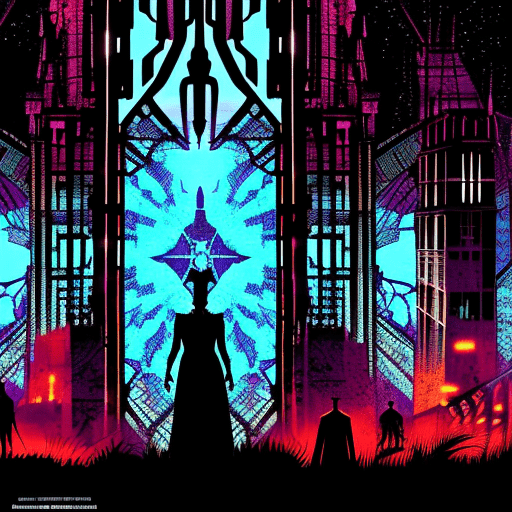One-line Summary:
Watchmen is a graphic novel by Alan Moore and Dave Gibbons that explores the complexities of morality, power, and the consequences of playing god in a world where superheroes exist.
The World of Watchmen
Watchmen is set in an alternate version of America during the 1980s, where masked vigilantes are a part of society. However, the presence of these costumed heroes has had a profound impact on the world. Richard Nixon is still president, the United States won the Vietnam War, and tensions between the U.S. and the Soviet Union are at an all-time high. Against this backdrop, the story follows a group of retired vigilantes as they navigate a world on the brink of disaster.
The Characters and Their Struggles
The story primarily revolves around a diverse cast of characters, each grappling with their own personal struggles and moral dilemmas. Rorschach, a masked vigilante with a black and white view of justice, serves as the story’s moral compass. His uncompromising nature and relentless pursuit of truth make him a compelling and complex character.
Dr. Manhattan, a former physicist turned god-like being, is another central figure in the narrative. His ability to manipulate matter and see through time has distanced him from humanity, leading to a detachment from the world and its inhabitants. His struggle with his own sense of purpose and identity forms a significant part of the story.
Other characters, such as the second-generation Silk Spectre, the retired Nite Owl, and the enigmatic Ozymandias, also play crucial roles in the narrative. Each character brings their own unique perspective and personal demons to the story, adding depth and complexity to the overall narrative.
The Complexity of Morality and Power
One of the central themes of Watchmen is the exploration of morality and power. The story raises questions about the responsibility of those who possess extraordinary abilities and the consequences of their actions. It challenges the notion of superheroes as infallible paragons of virtue and instead presents flawed individuals who are grappling with their own demons.
The characters in Watchmen are forced to confront the moral implications of their actions and the consequences of their decisions. The line between hero and villain becomes blurred as they navigate a world where the ends may justify the means. The story delves into the dark and gritty aspects of human nature, highlighting the complexities of morality and the choices individuals make when faced with difficult circumstances.
Key Takeaways:
- The graphic novel explores the complexities of morality and power in a world where superheroes exist.
- It challenges the traditional notions of heroism and presents flawed characters who must grapple with their own moral dilemmas.
- Watchmen raises thought-provoking questions about the responsibility of those with extraordinary abilities and the consequences of their actions.
“Who watches the Watchmen?” – Rorschach
In conclusion, Watchmen is a thought-provoking and complex graphic novel that delves into the moral implications of power and the consequences of playing god. Through its diverse cast of characters and intricate storytelling, it challenges traditional notions of heroism and presents a world where the line between right and wrong is blurred. Watchmen serves as a reminder that even those with the best intentions can have unintended and far-reaching consequences.












